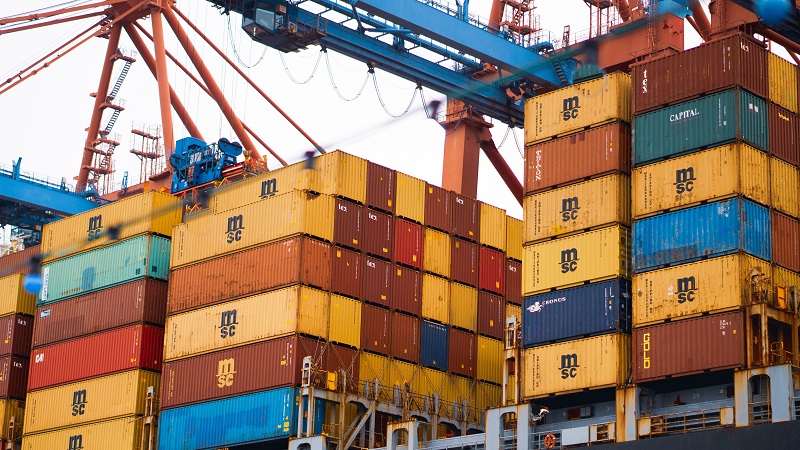Emerging markets were notable beneficiaries of globalisation. Their strength as low-cost manufacturing hubs brought new capital and influence, and helped many developing economies kick-start their growth.
Against this backdrop, it stands to reason they would suffer from any reversal of the globalisation impulse – yet a number of emerging markets are poised to see significant benefits.
‘Deglobalisation’ has been a hot topic, as frosty relations between China and the US influence where companies look to source and manufacture their products. The reality is more nuanced. The KOF Globalisation index, a measure of the economic, social and political dimensions of globalisation, shows only a marginal drop-off in the globalisation impulse over the past two or three years, taking the world back to 2015 levels.
See also: EM’s the breaks: Better times ahead for emerging markets
Nevertheless, Jan Egbert Sturm, director at the KOF Swiss Economic Institute, says both geopolitics and shifting supply chains are changing relationships between nations: “There has been a general tendency for globalisation to increase over time.
“On the one hand, it’s a slow process, on the other, it’s very often triggered by larger events like the end of the cold war, which integrated former communist economies into the global economy. We saw that subsequently with China and India.
“What disturbed this was the financial crisis…it reduced the speed of globalisation and triggered more inward-orientated policies.” Trump’s ‘America First’ policy was perhaps the highest profile example.
Today, Sturm says geopolitics is a factor, but the main issue reshaping global connections is supply chain resilience: “Resilience doesn’t mean reduced globalisation. It simply means that we increase the network of global suppliers. It’s not necessarily the case that globalisation goes down, but it will be of a different kind.”
The shifting geopolitical landscape has implications for some emerging markets. Countries are ploughing considerable resources into developing their own semiconductor manufacturing capability. The CHIPS and Science Act in the US, for example, sought to incentivise domestic production of the chips necessary for electric cars, big data analytics and other technology areas.
This could dent specific emerging markets, which have long-dominated production. However, Laurence Bensafi, portfolio manager at RBC Global Asset Management, says this is some way off: “Our view on the tech-war is the current global manufacturing supply of semiconductors, which favours emerging-market countries and companies in Taiwan and Korea, won’t change much over the next five years and quite possibly over the next 10 years.”
The reconfiguring of supply chains may prove more important in shifting the balance within emerging markets.
Bensafi adds: “Global supply chains are undergoing a transformation, but in our view such a transformation is likely to result in a zero-sum gain for both global trade and emerging market equities as an asset class. We would refer to this outcome as ‘re-globalisation‘, rather than ‘de-globalisation’. After reaching an all-time high in 2022, China’s share of global exports is likely to decline. However, other emerging-market countries such as Mexico, the ASEAN region and India will benefit and take that share.”
See also: Deep dive. Searching for pearls when the world is no longer your oyster
In Asia, the China-plus-one strategy, which sees international businesses diversify their businesses to other regional markets, is seeing capital directed to, among others, India and Vietnam. India has sought to capitalise on the shift by putting clear incentives in place for global business to invest. Its strongest success to date has been to win a far greater share of iPhone manufacturing. Apple now makes 7% of its iPhones in India – equivalent to $7bn.
Vietnam has also benefitted from Apple’s diversification, winning part of its MacBook production. Xiaomi confirmed production at a factory in Thai Nguyen, one of number of electronics firms using Vietnam as a regional production centre. Car supplier Brose is also weighing a move to the country, though Thailand is also on its radar.
There are also beneficiaries in Latin America, principally in Mexico. Chris Tennant, co-portfolio manager of the Fidelity Emerging Markets investment trust, said the country is likely to benefit as US companies look to bring manufacturing closer to home: “Our emerging market investment team visited Mexico and saw first-hand the positive impetus that nearshoring is set to have on Latin America companies.” He believes this will be a real tailwind for the country as companies build factories and support employment growth in the region.”
As it stands, Tennant says Mexico exports just under $400bn a year to the US with current estimates suggesting this nearshoring trend could add an incremental $100-150bn to this: “Any increase in exports from Mexico to the US will ultimately support a whole range of industries, including manufacturing, heavy industry, logistics, real estate, and transport. We see a number of Mexican companies that are set to be key beneficiaries of this trend, including railroad transportation business Grupo Mexico Transportes, and also GCC, a cement producer and supplier.”
The problem for investors is this trend is unlikely to be captured by the major emerging market indices, which remain dominated by China – and China is likely to be on the wrong side of the change. In general, the trend benefits smaller emerging and frontier markets. Even India only represents around 13% of the MSCI EM index, while Mexico is just 2-3%. Vietnam is 30% of the MSCI Frontier Market index, but does not yet appear in the MSCI EM index.
Many of the active managers are starting to take note, however. James Thom, manager of the Abrdn New Dawn investment trust, for example, identified supply chain restructuring as a major theme, equivalent to digitalisation or rising consumption. It could certainly reshape the power balance within emerging markets over the next decade.







